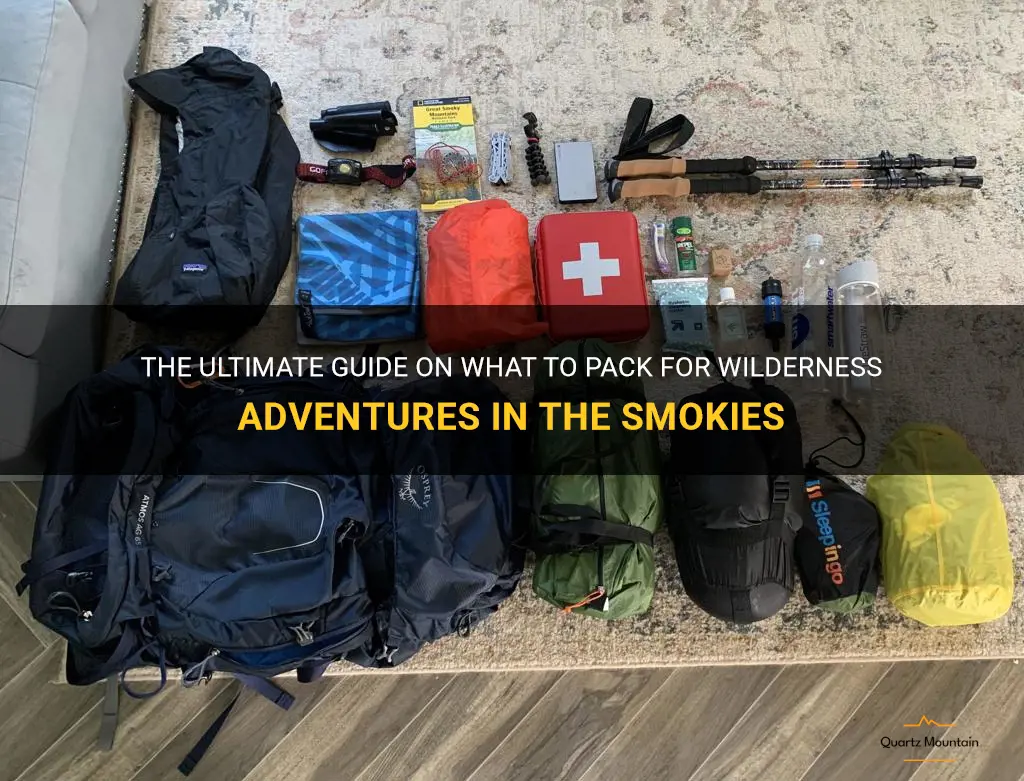
Are you ready for a thrilling adventure in the Great Smoky Mountains? If so, it's essential to be prepared with the right gear and supplies to ensure a safe and enjoyable experience. In this ultimate guide, we'll take you through everything you need to pack for wilderness adventures in the Smokies. From essential clothing and footwear to camping gear and emergency supplies, you'll be well-equipped for any outdoor pursuit. So grab your backpack and let's get packing for a wild and unforgettable journey in the beautiful Smoky Mountains!
| Characteristics | Values |
|---|---|
| Clothing | Layered clothing, moisture-wicking, waterproof, and breathable materials |
| Footwear | Sturdy hiking boots or shoes |
| Backpack | Lightweight and durable |
| Sleeping bag | Appropriate for the season and temperature |
| Tent | Lightweight and weather-resistant |
| Food and water | High-energy and non-perishable food, water purification system |
| First aid kit | Including basic medical supplies |
| Navigation tools | Map, compass, GPS, or guidebook |
| Fire starter | Waterproof matches or lighter |
| Emergency shelter | Emergency bivvy or tarp |
| Illumination | Headlamp or flashlight |
| Sun protection | Hat, sunglasses, and sunscreen |
| Insect repellent | DEET-based or natural repellent |
| Personal hygiene items | Toothbrush, toothpaste, hand sanitizer, biodegradable soap |
| Multi-purpose tool | Swiss Army knife or multi-tool |
| Extra clothes | Extra socks, gloves, and hat |
| Communication devices | Cell phone, two-way radio, or satellite messenger |
| Repair kit | Duct tape, sewing kit, and spare parts |
| Wildlife safety gear | Bear spray and bear canister for food storage |
| Emergency contact info | Leave details with someone at home |
What You'll Learn
- What essential items should I pack for a wilderness trip in the Smoky Mountains?
- Are there any specific clothing or gear recommendations for the changing weather in the Smokies?
- What food and cooking supplies should I bring for wilderness camping in the Smoky Mountains?
- Are there any safety precautions or emergency equipment that I should include in my packing list?
- Is there a recommended list of personal items or amenities that would enhance the comfort of my wilderness experience in the Smoky Mountains?

What essential items should I pack for a wilderness trip in the Smoky Mountains?
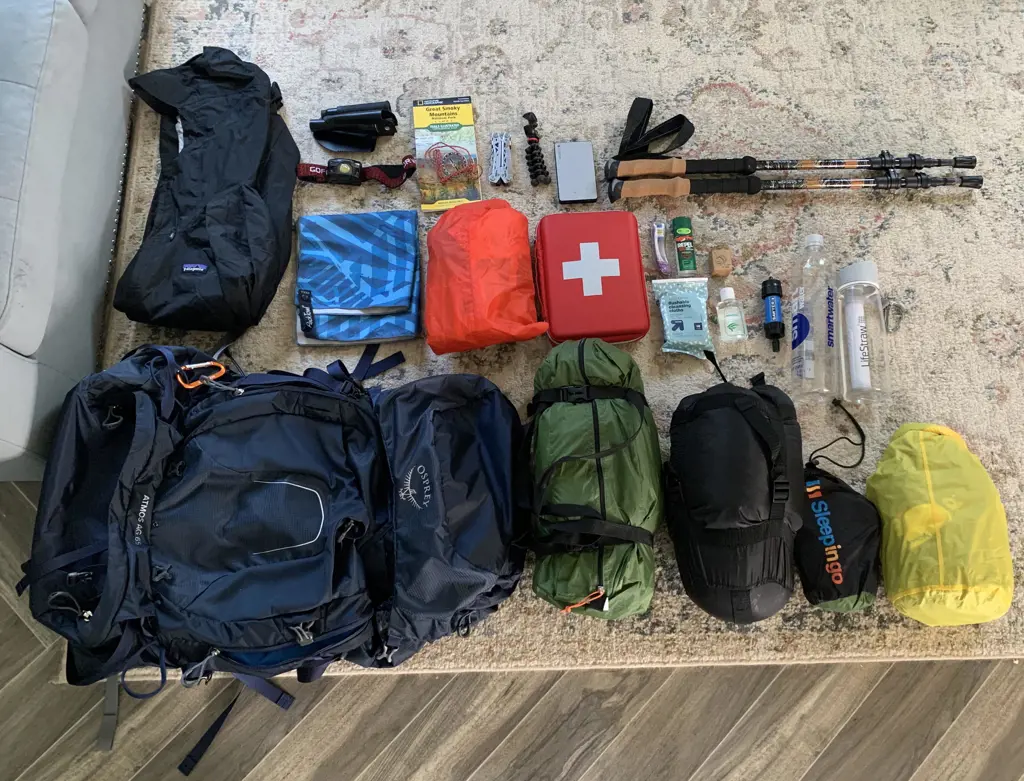
When embarking on a wilderness trip in the Smoky Mountains, it is essential to pack the right items to ensure a safe and enjoyable experience. The rugged terrain and unpredictable weather of this region demand careful preparation. Whether you are planning a day hike or an extended backpacking trip, here are some essential items you should pack:
- Navigation Tools: A detailed map of the area and a reliable compass are invaluable for navigating the trails. Additionally, a GPS device can be helpful, but it should not be solely relied upon due to the possibility of signal loss in the mountains.
- First Aid Kit: Accidents happen, and having a well-stocked first aid kit can make a significant difference in treating injuries and preventing infection. Make sure your kit includes adhesive bandages, gauze pads, antiseptic wipes, painkillers, and any necessary prescription medications.
- Water Filter: Staying hydrated is crucial while hiking in the Smoky Mountains. There are numerous water sources, but it is essential to filter or purify the water to avoid waterborne illnesses. A lightweight and easy-to-use water filter or purification tablets are essential for this purpose.
- Rain Gear and Extra Clothing: The weather in the Smoky Mountains can change rapidly, and rainfall is common. Pack a lightweight rain jacket or poncho, as well as a waterproof cover for your backpack. Additionally, bring extra clothing layers to accommodate changing temperatures.
- Shelter: While there are established campsites in the park, it is wise to carry a lightweight tent or hammock in case of unforeseen circumstances. Even if you plan to stay in a designated campsite, having your own shelter provides a backup option in case of overcrowding or other issues.
- Food and Cooking Supplies: Plan your meals ahead of time and pack lightweight, non-perishable foods such as trail mix, dried fruits, and energy bars. Carry a lightweight cooking stove and appropriate fuel if you plan to cook hot meals. Remember to pack a sufficient amount of food to sustain you throughout your trip.
- Fire-starting Equipment: Fire can provide warmth, a way to cook food, and a signaling method in case of an emergency. Carry waterproof matches, a lighter, and fire-starting materials such as tinder or fire starters.
- Personal Protection Gear: Depending on the season, insect repellent, a hat, and sunscreen are essential for protecting yourself from bugs and harmful UV rays. In colder months, thermal gloves, a hat, and extra layers are necessary to stay warm.
- Tools and Equipment: Depending on the nature of your trip, you may need additional tools such as a knife, multi-tool, rope, and a small repair kit. These items can prove useful for various tasks like repairing gear, constructing a makeshift shelter, or tying down equipment.
- Emergency Gear: Although we hope to avoid emergencies, it is essential to be prepared for unforeseen situations. Carry a whistle, a signaling mirror, a flashlight with extra batteries, and a fully charged cell phone (if there is reception in the area). Knowing how to use these tools can significantly increase your chances of being located during an emergency.
Remember, each trip is unique, and you should tailor your packing list to your specific needs and the duration of your trip. It is crucial to research the area and the expected weather conditions before packing to ensure you are adequately prepared. By packing these essential items, you can enjoy the beauty of the Smoky Mountains while staying safe and prepared for any situation that may arise.
Essential Items to Pack for a Girl's Trip: A Guide to Traveling in Style
You may want to see also

Are there any specific clothing or gear recommendations for the changing weather in the Smokies?
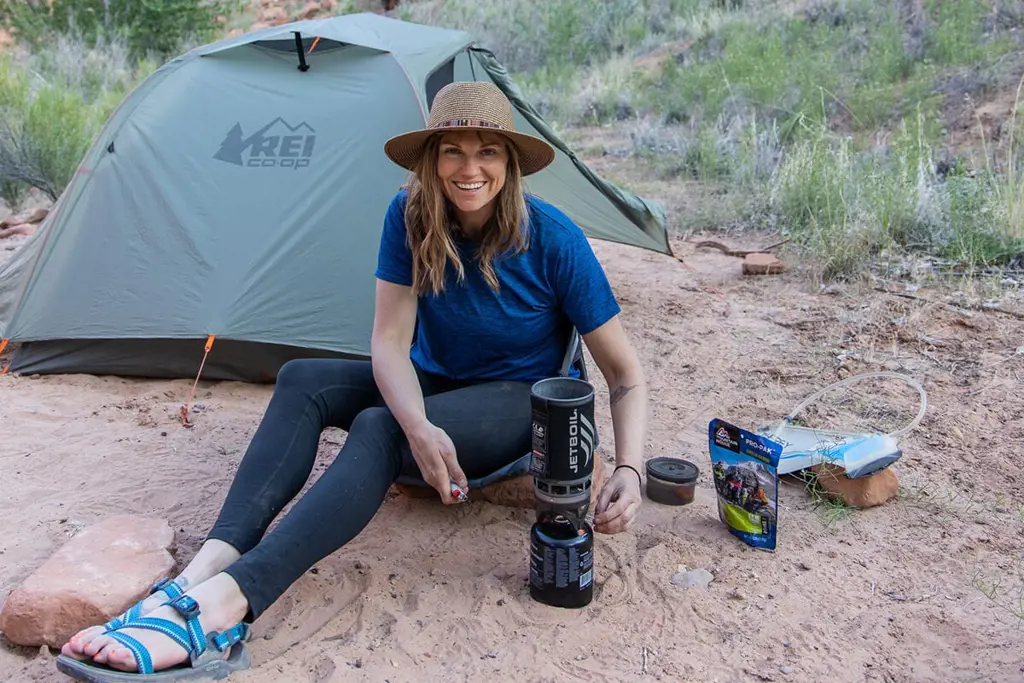
The Great Smoky Mountains National Park is a beautiful and diverse destination, but its weather can be unpredictable and ever-changing. As a result, it's essential to be prepared with the right clothing and gear to ensure a comfortable and enjoyable visit. Here are some specific recommendations for dealing with the changing weather in the Smokies.
Layering is key when it comes to dressing for the weather in the Smokies. The temperature can vary significantly throughout the day, so wearing multiple layers allows you to adjust your clothing as needed. Start with a moisture-wicking base layer that will keep you dry and comfortable. This could be a lightweight long-sleeved shirt or a thin sweater. Avoid cotton as it retains moisture and can leave you feeling damp and cold.
On top of your base layer, add an insulating layer such as a fleece or down jacket. This layer will help trap heat and keep you warm when temperatures drop. Fleece is a popular choice as it is lightweight and breathable. Down jackets, while bulkier, provide excellent insulation and are highly packable. Opt for a jacket with a hood to protect your head from wind and rain.
For the outer layer, choose a waterproof and windproof jacket or shell. This layer will protect you from rain, snow, and wind. Look for a jacket with sealed seams and adjustable cuffs and hems to prevent water from seeping inside. Additionally, consider a jacket with ventilation options, such as pit zips, to allow for breathability during more active pursuits.
When it comes to bottoms, consider wearing moisture-wicking, quick-drying pants or hiking leggings. Avoid jeans or heavy cotton pants that retain moisture and take a long time to dry. Depending on the temperature, you may want to wear thermal or wool long underwear for added warmth.
In terms of footwear, sturdy hiking boots or shoes with good traction are essential for navigating the park's trails. Look for waterproof or water-resistant options that will keep your feet dry in wet conditions. It's also a good idea to pack a lightweight pair of camp shoes or sandals to give your feet a break at the end of the day.
Accessories are equally important in dealing with changing weather. A hat is crucial for protecting your head from both sun and rain. Opt for a wide-brimmed hat for sun protection or a waterproof hat for rain. Gloves or mittens are essential for keeping your hands warm in colder temperatures. Consider packing a lightweight, waterproof pair as well as a thicker, insulated pair for colder days.
Other accessories to consider include sunglasses or goggles for eye protection, sunscreen to protect your skin from harmful UV rays, and a buff or neck gaiter to keep your neck and face warm in chilly conditions. Don't forget to bring a daypack to carry extra layers, water, snacks, and any other essentials you may need throughout the day.
It's also a good idea to check the weather forecast before heading out and to be prepared for sudden changes in weather. Always carry a rain jacket or poncho in case of unexpected showers. Additionally, make sure to pack enough food, water, and emergency supplies in case you get stranded or lost for an extended period.
In conclusion, dressing appropriately for the changing weather in the Smokies is crucial for a comfortable and safe visit. Layering your clothing, wearing moisture-wicking materials, and choosing waterproof and windproof outerwear are essential. Don't forget sturdy footwear, hats, gloves, and other accessories to protect yourself from the elements. By following these recommendations, you can ensure an enjoyable experience in the beautiful and diverse Great Smoky Mountains National Park.
Essential Items to Pack for UW Madison: A Complete Guide
You may want to see also

What food and cooking supplies should I bring for wilderness camping in the Smoky Mountains?
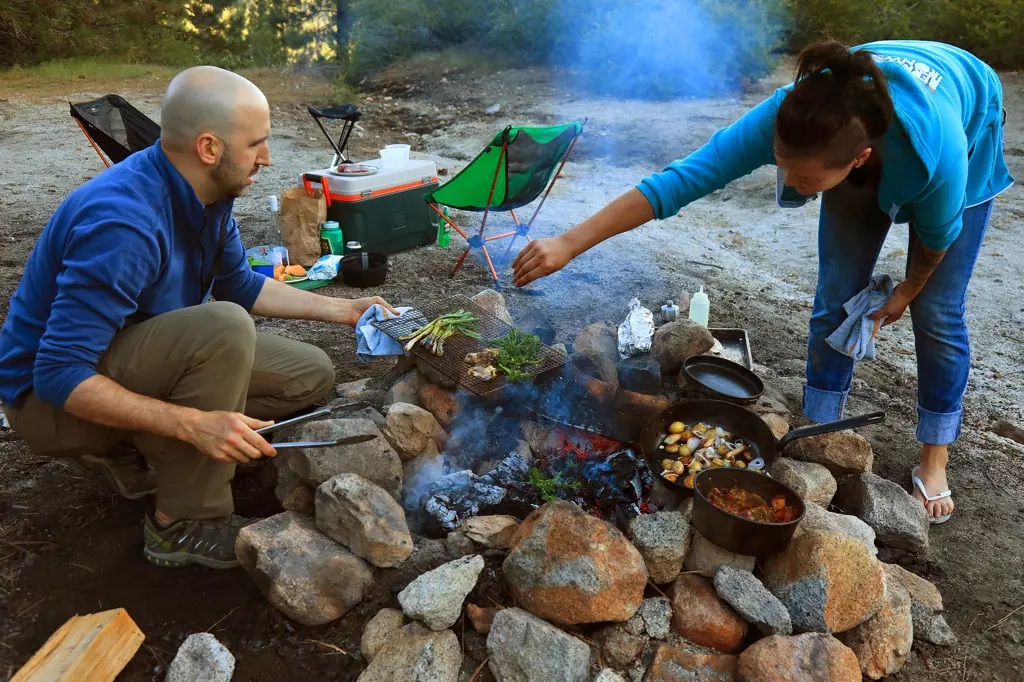
Wilderness camping in the Smoky Mountains can be a truly memorable and immersive experience. Being well-prepared with the right food and cooking supplies is essential for a successful and enjoyable camping trip. This article will guide you through the necessary food and cooking supplies to bring for your wilderness adventure.
- Plan your meals: Before heading out to the Smoky Mountains, create a meal plan for the duration of your camping trip. Consider the number of days, the number of people in your group, and their dietary preferences and restrictions. This will help you determine the quantity and variety of food you need to bring.
- Lightweight and non-perishable food: Since you'll be carrying your supplies on your back, it's important to pack lightweight and non-perishable food items. Some examples include dried fruits, nuts, granola bars, instant oatmeal, trail mix, dehydrated meals, and canned goods. These items are easy to pack, have a long shelf life, and provide the necessary nutrients to keep you energized during your outdoor activities.
- Fresh produce: While non-perishable food items are convenient, it's also nice to have fresh produce to add some variety and nutrition to your meals. Opt for fruits and vegetables that are durable and can withstand a few days without refrigeration, such as apples, oranges, carrots, and cucumbers. Pack these items in a well-insulated cooler to keep them fresh.
- Cooking equipment: When it comes to cooking supplies, keep it simple and efficient. Some essential items to bring include a lightweight stove, fuel canisters, a pot, a pan, utensils (spoons, forks, and knives), a cutting board, a knife, a can opener, aluminum foil, and a collapsible water container. These items are compact and easy to pack, ensuring that you have everything you need to prepare and cook your meals.
- Food storage: Proper food storage is essential to prevent spoilage, attracting wildlife, and keeping your supplies organized. Use resealable plastic bags or waterproof containers to store your food items. Consider dividing them into individual portions for easier access and to minimize waste.
- Water purification: The Smoky Mountains are abundant in freshwater sources, but it's crucial to purify the water before drinking or cooking with it. Carry a water filter, purification tablets, or a portable water purifier to ensure the water you consume is safe.
- Waste management: Leave no trace and practice responsible camping by disposing of your waste properly. Bring garbage bags to collect your trash and pack out everything you bring in. This includes food scraps and empty food containers. Keep the wilderness clean and respect the natural environment.
By following these guidelines, you'll be well-prepared for wilderness camping in the Smoky Mountains. Remember to pack lightweight and non-perishable food items, bring essential cooking supplies, plan your meals in advance, and practice proper food and waste management. With the right food and cooking supplies, you can enjoy delicious meals in the great outdoors while immersing yourself in the natural beauty of the Smoky Mountains.
The Ultimate Packing List for a Memorable 7-Day Mexican Riviera Cruise
You may want to see also

Are there any safety precautions or emergency equipment that I should include in my packing list?

When planning a trip, it's crucial to think about safety precautions and emergency equipment that you should include in your packing list. Whether you're embarking on a hiking adventure, going on a road trip, or traveling to a remote location, being well-prepared can save lives. In this article, we will discuss some essential safety precautions and emergency equipment that you should consider including in your packing list.
First Aid Kit:
A well-stocked first aid kit is a must-have item for any travel plan. It should include band-aids, antiseptic ointment, adhesive tape, sterile dressings, painkillers, and any necessary prescription medications. Additionally, consider including items like insect repellent, sunscreen, and a thermometer. Familiarize yourself with the contents of the first aid kit and learn basic first aid techniques to effectively address any injuries or illnesses that may arise during your trip.
Personal Locator Beacon (PLB) or Satellite Messenger:
When traveling to remote areas or engaging in outdoor activities, it's essential to have a way to communicate in case of emergencies. A personal locator beacon (PLB) or a satellite messenger can be invaluable in situations where you need to request immediate assistance. These devices can transmit your location to emergency services, allowing them to quickly locate and rescue you.
Portable Water Filter:
Access to clean drinking water is crucial for your health and safety, especially when traveling in locations with limited water sources. Including a portable water filter in your packing list will ensure that you can purify water from natural sources such as rivers or lakes, reducing the risk of waterborne illnesses.
Emergency Blanket and Whistle:
In case you find yourself stranded or lost, an emergency blanket can provide essential warmth and protection from the elements. These blankets are lightweight, compact, and retain body heat effectively. Additionally, including a whistle in your packing list can help attract attention and signal for help in emergency situations.
Navigation Tools:
Whether you're hiking in the wilderness or exploring unfamiliar cities, having reliable navigation tools is essential. Include a map, compass, and GPS device in your packing list to help you find your way and prevent getting lost. Familiarize yourself with how to use these tools before your trip to ensure you can navigate effectively.
Firestarter:
In emergency situations, having the ability to start a fire can provide warmth, cook food, and signal for help. Include waterproof matches, a lighter, or a fire starter tool, such as a ferrocerium rod, in your packing list. Be sure to check local regulations and restrictions regarding fires before using them in certain areas.
Travel Insurance:
While not a physical item, having travel insurance is vital for ensuring your safety and peace of mind. Travel insurance can provide coverage for medical emergencies, trip cancellations, lost or stolen belongings, and other unforeseen events. Be sure to carefully read and understand the terms and coverage of your travel insurance policy before embarking on your trip.
In conclusion, including safety precautions and emergency equipment in your packing list is crucial to ensure your well-being and survival during your travels. A well-stocked first aid kit, personal locator beacon, portable water filter, emergency blanket, whistle, navigation tools, firestarter, and travel insurance are essential items to consider. By being prepared and proactive, you can enjoy your trip with confidence and peace of mind knowing that you have taken the necessary steps to keep yourself and your fellow travelers safe.
Essential Items to Pack for a September Trip to Europe
You may want to see also

Is there a recommended list of personal items or amenities that would enhance the comfort of my wilderness experience in the Smoky Mountains?
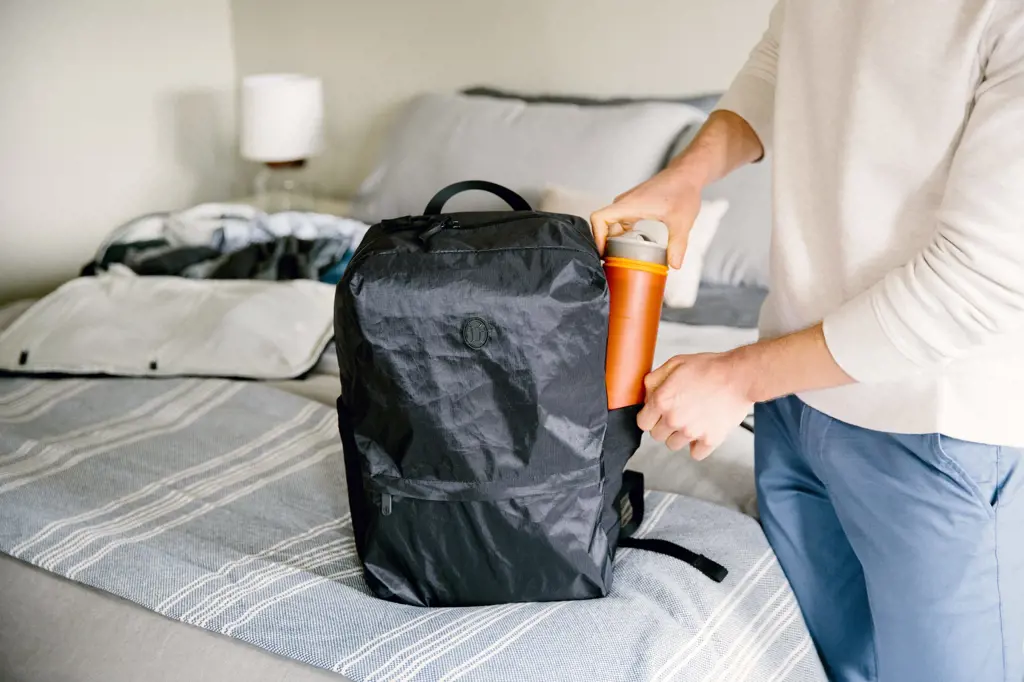
When venturing into the wilderness of the Smoky Mountains, it is important to be prepared and equipped with the necessary items to enhance your comfort and overall experience. While there may not be a definitive recommended list of personal items or amenities, there are several items that can greatly enhance your stay in the wild. These items range from camping gear to personal care items.
First and foremost, it is essential to have proper camping gear such as a tent, sleeping bag, and sleeping pad. These items will provide you a comfortable and secure place to sleep at night. Make sure to choose a tent that is appropriate for the number of people in your group and the expected weather conditions. A high-quality sleeping bag and sleeping pad will provide insulation and cushioning for a good night's sleep. Additionally, consider a camping pillow for additional comfort.
Next, consider personal care items such as a headlamp or flashlight, insect repellent, and sunscreen. A headlamp or flashlight is crucial for navigating in the dark and finding your way around the campsite. Insect repellent is essential in warding off mosquitoes and other pesky bugs that can disrupt your outdoor experience. Sunscreen is also important, as the sun's rays can be strong even in the shade of the forest.
Another item that can greatly enhance your comfort in the wilderness is a camping chair or a hammock. These items provide a comfortable place to sit and relax at the campsite, whether it be by the fire or while enjoying the beautiful scenery. A camping chair with a built-in cup holder can also be convenient for holding a drink or snack.
Additionally, consider packing a camp stove and cookware for preparing meals while camping. This will allow you to enjoy hot meals and beverages, even in the wilderness. A lightweight and portable stove, along with a compact set of cookware, can make cooking in the wild a breeze.
Lastly, consider bringing entertainment items to make your stay more enjoyable. This could include a book, a deck of cards, or a portable speaker to listen to music. These small items can provide entertainment during downtime at the campsite.
In summary, while there may not be a definitive recommended list of personal items or amenities for enhancing comfort in the wilderness, there are several items that can greatly enhance your experience in the Smoky Mountains. From camping gear to personal care items, it is important to be prepared with the necessary items for a comfortable and enjoyable wilderness experience. Whether it be a comfortable tent and sleeping bag, personal care items like insect repellent and sunscreen, or additional comfort items like a camping chair or hammock, these items can make your stay in the wild much more comfortable and enjoyable. So make sure to pack these essential items before embarking on your wilderness adventure in the Smoky Mountains.
Essential Packing Checklist for a Trip to Los Angeles, California in November
You may want to see also
Frequently asked questions
When packing clothing for a wilderness trip at the Smokies, it's important to be prepared for various weather conditions. Be sure to pack layers, including a base layer made of moisture-wicking material, a mid-layer for insulation, and a waterproof and windproof outer layer. It's also a good idea to bring a hat, gloves, and a warm jacket, as temperatures can drop significantly in the higher elevations.
When hiking in the Smokies, it's important to have sturdy and comfortable footwear. Opt for hiking boots or trail shoes that provide ankle support and have a good tread for traction. Make sure your footwear is broken in and comfortable before embarking on your wilderness adventure to avoid blisters or foot pain.
When packing for a wilderness trip at the Smokies, it's essential to have a few key pieces of gear. First, bring a high-quality backpack that fits well and has enough room to carry your necessities. You'll also want to pack a reliable map and compass, as well as a portable water filtration system to ensure you have access to clean water throughout your journey. Additionally, don't forget a headlamp or flashlight, a first aid kit, a lightweight tent, a sleeping bag, and a camping stove if you plan to cook your meals.
In addition to clothing and essential gear, there are a few other items you may want to consider packing for a wilderness trip at the Smokies. These include insect repellent, sunscreen, a multi-tool or knife, a hat and sunglasses for sun protection, extra socks, a whistle or signaling device in case of emergencies, and a camera to capture the beautiful scenery. Additionally, it's a good idea to bring extra food and snacks to keep your energy up during your outdoor adventures.







